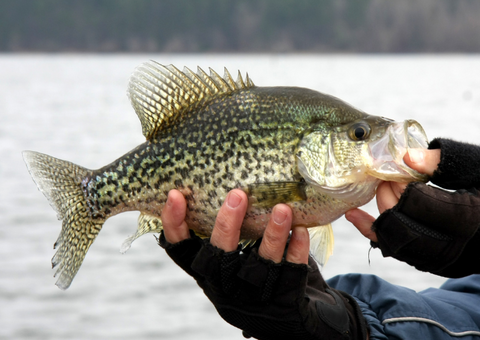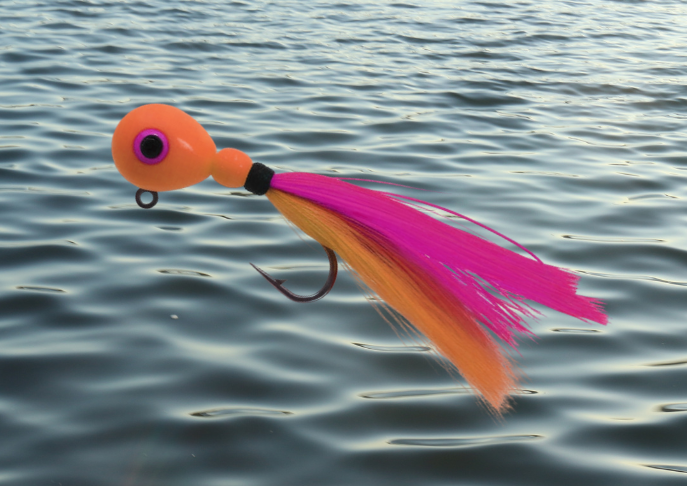Key takeaways
- Choose the right crappie jig based on fishing conditions.
- Rig your jig correctly, selecting the appropriate line and adjusting the action to entice bites.
- Use different techniques, adapt to fish behavior, and target high-percentage areas for consistent success when fishing with crappie jigs.
Crappie jigs are a popular and effective lure choice for anglers targeting crappie. These compact lures consist of a weighted head and a hook, typically adorned with a soft plastic or other material body designed to mimic the appearance of small baitfish like minnows or shad.
To maximize success when fishing with crappie jigs, it is crucial to employ the right techniques and rigging methods. By selecting the appropriate jig for the conditions, rigging it properly, and using effective fishing techniques, anglers can significantly boost their catch rates and enjoy more productive crappie fishing trips.
Table of Contents
Choosing the Right Jig
When selecting a crappie jig, it's essential to take into account several key factors that can impact its effectiveness.
Water clarity plays a significant role in jig selection, as clearer water may require more natural-looking jigs, while stained or murky water often calls for brighter, more visible options.
The depth at which you'll be fishing and the type of cover you'll be targeting, such as brush piles, stumps, or weed beds, should also guide your choice of jig.

Jig head shape, hook size, and weight are additional critical considerations when choosing the right crappie jig. Different head shapes, such as round, minnow, or bullet, can affect the jig's action and the way it moves through the water. Hook size should be matched to the size of the soft plastic body and the crappie you expect to catch.
Finally, the weight of the jig head can vary based on factors like fishing depth and current, with heavier jigs being more suitable for deeper water or stronger currents.
Rigging Your Crappie Jig
Selecting the appropriate fishing line is a key aspect of rigging your crappie jig correctly. Each type of line has its strengths and is suited for different fishing situations.
- Fluorocarbon line is an excellent choice when fishing in mid-depth or near the bottom, as it sinks and provides heightened sensitivity for detecting subtle bites.
- When casting lightweight jigs or using jig-bobber combinations around visible cover, a high-visibility copolymer line in 4 or 6-pound test is recommended for easier line management and bite detection.
- Braided line offers unparalleled sensitivity, making it a top choice when using tactics like forward-facing sonar to target crappie holding tight to cover such as trees or stumps.
Attaching the jig to the line is typically done using a reliable fishing knot like the Palomar knot. Ensure the knot is tied securely and the jig is properly positioned on the line to optimize its action and presentation.
If your jig head doesn't have a pre-rigged soft plastic body, adding one is the next step. Select a soft plastic trailer that mimics natural forage and matches the size of your jig head. Thread the soft plastic onto the hook, ensuring it is straight and secure.

Adjusting the jig's action involves fine-tuning your presentation to trigger bites. Experiment with retrieval speeds, pauses, and twitches to impart lifelike action to your jig. When fishing around suspended crappie, focus on keeping the jig at the correct depth and use subtle movements to entice strikes.
Best Techniques for Fishing with Crappie Jigs
- Vertical Jigging is a simple yet effective technique for catching crappie. Lower your jig to the desired depth and use a subtle jigging motion, allowing the lure to rise and fall with minimal rod movement. This technique is best employed when fish are holding at specific depths and responds well to a more finesse presentation.
- The Straight Retrieve method involves starting with a larger jig to target the most aggressive fish in the school. Begin by casting out and reeling the jig back with a steady retrieve. If the action slows, switch to a smaller jig like a 1/16 oz tube jig to entice the less aggressive fish in the school. This two-pronged approach can help you catch both quality and quantity.
- Slip Float fishing is an excellent way to present your jig at precise depths around cover. Rig your jig below a slip float, cast it out, and use a jigging motion to impart action as you slowly reel the rig back to the boat. This technique allows you to cover water while maintaining the benefits of a vertical presentation.
- Bobber Fishing is a tried-and-true method for catching crappie with jigs. Rig your jig below a fixed bobber, cast it out, and let the natural motion of the water impart action to the jig. Periodically reel in a few feet of line and pause, allowing the jig to remain in the strike zone for extended periods.
Check out other ways of fishing with lures here.
The Importance of Color Selection
When selecting crappie jig colors, it's crucial to consider the impact of water clarity and light conditions on the lure's visibility and attractiveness to the fish. In clear water, natural light penetrates deeper, allowing crappie to scrutinize the jig more closely. Conversely, in stained or muddy water, light penetration is reduced, and the jig's silhouette becomes more important than intricate details.

For clear water scenarios, opt for jig colors that closely mimic the appearance of natural forage, such as minnows or shad. Subtle, translucent hues like smoke, ghost, or watermelon can be highly effective, as they provide a lifelike presentation without appearing too artificial.
When fishing in muddy or heavily stained water, bold, bright colors are often the key to success. Vibrant hues like chartreuse, white, orange, or red create a strong silhouette and can trigger reactive strikes from crappie. These bright colors are easier for the fish to spot in low visibility conditions, making them an excellent choice for murky water.
Don't be afraid to experiment with different color combinations to find what works best in a given situation. Many anglers find success with contrasting color pairings, such as black and chartreuse, red and chartreuse, or chartreuse paired with other bold hues. Trying various color options and observing the crappie's response can help you dial in the most effective jig color for the conditions at hand.
Tips for Experimenting and Adapting
One of the keys to consistently catching crappie with jigs is a willingness to experiment with different jig types, sizes, and fishing depths until you find what works best for the current conditions.
Don't be afraid to try various jig styles, such as hair jigs, tube jigs, or marabou jigs, as each can have its own unique action and appeal.
Similarly, varying the size of your jig can make a big difference in your success rate. Smaller jigs are often effective for finicky fish or when targeting smaller crappie, while larger jigs can be more productive when seeking out bigger fish or fishing in deeper water.
Adjusting the depth at which you fish your jig is also crucial, as crappie often relate to specific depth ranges depending on factors like water temperature, oxygen levels, and available forage.
Paying close attention to fish behavior and adapting your approach accordingly can dramatically improve your crappie jigging success. If you notice that the fish are hitting your jig aggressively, you may want to try a larger jig size or a faster retrieve to capitalize on their active feeding behavior. Conversely, if the bites are subtle or you're experiencing short strikes, downsizing your jig or slowing down your presentation can often entice more fish to commit to the lure.
Additionally, if you find that the crappie are holding in specific areas, such as near submerged trees or brush piles, focusing your efforts on those high-percentage spots can lead to more consistent catches.
Conclusion
By applying these crappie jig hacks and tips, anglers can unleash the full potential of these versatile lures and experience the thrill of landing more slabs on every outing. Implementing these techniques and fine-tuning your approach will undoubtedly lead to more memorable catches and a greater appreciation for the excitement of chasing these popular panfish, whether you're a seasoned crappie enthusiast or a newcomer to the pursuit. So, grab your favorite crappie jigs, hit the water, and put these hacks into practice – your catch rate is about to soar!
- Stay up to date with the latest fishing techniques, news, and insider tips by visiting the Baitium blog.
MOST READ NEWS:
How To Use Your Fishing Records to Catch More Fish
Track your fishing trips, analyze patterns, and refine your techniques with a fishing log to catch more fish on every outing!
Solo Fishing Safety Tips: Stay Safe and Enjoy the Outdoors
Learn essential solo fishing safety tips: gear checklist, boat safety, emergency preparedness, weather monitoring & fishing location scouting. Stay safe on the water.
Secrets to Winter Fly Fishing Success
Master winter fly fishing with expert tips on trout behavior, essential gear, and proven techniques. Learn the secrets to catching more fish in cold weather.
How Cold Water Changes Fish Behavior: Insights for Anglers
Explore how cold water affects fish behavior and fishing techniques, enhancing your angling success and strategy.
Is Tech Making Fishing Too Easy? Exploring Forward-Facing Sonar (FFS)
Learn about forward facing sonar in fishing - what it is, how it works, rules for tournaments, ethics, and tips for finding fish with this game-changing technology.
Plan Your Best Fishing Trip Yet this 2025: A Complete Guide
Plan your fishing trip this off-season. Learn to choose destinations, prep gear, pick bait, and trust Baitium for expert tools and tips!
15 Fishing Resolutions for 2025: Set Yourself Up for Success
Discover 15 essential fishing resolutions for 2025: tackle organization, gear maintenance, angling techniques, conservation tips, tournament prep, and fishing safety guidelines.


